
A table showing profit margins of major publishers. A snippet of text related to this table is below.
1. The four-fold drain
1.1 Money
Currently, academic publishing is dominated by profit-oriented, multinational companies for
whom scientific knowledge is a commodity to be sold back to the academic community who
created it. The dominant four are Elsevier, Springer Nature, Wiley and Taylor & Francis,
which collectively generated over US$7.1 billion in revenue from journal publishing in 2024
alone, and over US$12 billion in profits between 2019 and 2024 (Table 1A). Their profit
margins have always been over 30% in the last five years, and for the largest publisher
(Elsevier) always over 37%.
Against many comparators, across many sectors, scientific publishing is one of the most
consistently profitable industries (Table S1). These financial arrangements make a substantial
difference to science budgets. In 2024, 46% of Elsevier revenues and 53% of Taylor &
Francis revenues were generated in North America, meaning that North American
researchers were charged over US$2.27 billion by just two for-profit publishers. The
Canadian research councils and the US National Science Foundation were allocated US$9.3
billion in that year.

A figure detailing the drain on researcher time.
1. The four-fold drain
1.2 Time
The number of papers published each year is growing faster than the scientific workforce,
with the number of papers per researcher almost doubling between 1996 and 2022 (Figure
1A). This reflects the fact that publishers’ commercial desire to publish (sell) more material
has aligned well with the competitive prestige culture in which publications help secure jobs,
grants, promotions, and awards. To the extent that this growth is driven by a pressure for
profit, rather than scholarly imperatives, it distorts the way researchers spend their time.
The publishing system depends on unpaid reviewer labour, estimated to be over 130 million
unpaid hours annually in 2020 alone (9). Researchers have complained about the demands of
peer-review for decades, but the scale of the problem is now worse, with editors reporting
widespread difficulties recruiting reviewers. The growth in publications involves not only the
authors’ time, but that of academic editors and reviewers who are dealing with so many
review demands.
Even more seriously, the imperative to produce ever more articles reshapes the nature of
scientific inquiry. Evidence across multiple fields shows that more papers result in
‘ossification’, not new ideas (10). It may seem paradoxical that more papers can slow
progress until one considers how it affects researchers’ time. While rewards remain tied to
volume, prestige, and impact of publications, researchers will be nudged away from riskier,
local, interdisciplinary, and long-term work. The result is a treadmill of constant activity with
limited progress whereas core scholarly practices – such as reading, reflecting and engaging
with others’ contributions – is de-prioritized. What looks like productivity often masks
intellectual exhaustion built on a demoralizing, narrowing scientific vision.

A table of profit margins across industries. The section of text related to this table is below:
1. The four-fold drain
1.1 Money
Currently, academic publishing is dominated by profit-oriented, multinational companies for
whom scientific knowledge is a commodity to be sold back to the academic community who
created it. The dominant four are Elsevier, Springer Nature, Wiley and Taylor & Francis,
which collectively generated over US$7.1 billion in revenue from journal publishing in 2024
alone, and over US$12 billion in profits between 2019 and 2024 (Table 1A). Their profit
margins have always been over 30% in the last five years, and for the largest publisher
(Elsevier) always over 37%.
Against many comparators, across many sectors, scientific publishing is one of the most
consistently profitable industries (Table S1). These financial arrangements make a substantial
difference to science budgets. In 2024, 46% of Elsevier revenues and 53% of Taylor &
Francis revenues were generated in North America, meaning that North American
researchers were charged over US$2.27 billion by just two for-profit publishers. The
Canadian research councils and the US National Science Foundation were allocated US$9.3
billion in that year.

The costs of inaction are plain: wasted public funds, lost researcher time, compromised
scientific integrity and eroded public trust. Today, the system rewards commercial publishers
first, and science second. Without bold action from the funders we risk continuing to pour
resources into a system that prioritizes profit over the advancement of scientific knowledge.
We wrote the Strain on scientific publishing to highlight the problems of time & trust. With a fantastic group of co-authors, we present The Drain of Scientific Publishing:
a 🧵 1/n
Drain: arxiv.org/abs/2511.04820
Strain: direct.mit.edu/qss/article/...
Oligopoly: direct.mit.edu/qss/article/...
11.11.2025 11:52 — 👍 596 🔁 427 💬 8 📌 60

Announcement of the event on 11.11.2025, 13:30-15:00 in the EU- Parliament "How can the CAP drive sustainable farming practices: Voices from farmers and science, and an evaluation of the CAP proposal"
Next week in the EU-Parliament (11.11.2025, 13:30-15), we will discuss the future of sustainable farming in Europe and the alignment or non-alignment of the CAP with sustainability criteria, based on @agtransect.bsky.social and #CAP4GI.
04.11.2025 07:57 — 👍 15 🔁 7 💬 1 📌 0
I cannot believe our work is finally out there and in @journal-evo.bsky.social ! This was an enormous group effort!
We provide an updated estimate of the number of buzz pollinated angiosperm species, genera, and families, look at consequences for diversification, number of transitions, and more!
23.10.2025 05:34 — 👍 130 🔁 51 💬 4 📌 3
10.10.2025 15:13 — 👍 3 🔁 2 💬 0 📌 0

Front cover of the European Butterfly Red List, showing Polyommatus humedasae. The report can be downloaded at https://www.bc-europe.eu/webpage.php?name=red-list-butterflies-2025
The new European Butterfly Red List is published today, with worrying findings. Over 1/4 (28%) of Europe’s 442 species are threatened with extinction or are close to being so. The situation is far worse for our 148 endemic species, 40% are now threatened or nearly so www.bc-europe.eu/webpage.php?...
11.10.2025 09:17 — 👍 159 🔁 105 💬 3 📌 5

Les papillons et les abeilles sauvages toujours plus menacés en Europe
Plusieurs dizaines de nouvelles espèces risquent la disparition, selon l’Union internationale pour la conservation de la nature, qui vient de mettre à jour sa liste rouge.
"L’état de conservation des abeilles sauvages, des papillons et autres pollinisateurs européens est désastreux, a réagi Jessika Roswall, la commissaire européenne à l’environnement".
Sans doute l'article le plus important du WE.
Quand va-t-on vraiment réagir ?
www.lemonde.fr/planete/arti...
11.10.2025 13:13 — 👍 70 🔁 63 💬 1 📌 4
Jeudi le 16 octobre à 11h30 EST, @andreapaz.bsky.social, Malgorzata Anna Gazda, Matthew Regan et Daniel Kierzkowski présenteront un séminaire de sciences biologiques avec comme invitée @mathildetissier.bsky.social. Envoyez-nous un message privé pour obtenir le lien Zoom.
10.10.2025 12:47 — 👍 1 🔁 1 💬 0 📌 1

Are you employed by a public organisation in Europe, have experience in #communication and would like to work with the ERC for a few years?
We may have the #job for you!
All details 👉 link.europa.eu/7GNMjc
#secondment #media #events #website #position #temporary
18.09.2025 08:00 — 👍 13 🔁 6 💬 1 📌 1
We’re recruiting for a multi-university (and ECCC) cross-city project on urban biodiversity, connectivity, and ecosystem services: 1) a Concordia or U Laval MSc student (PhD possible), 2) a UBC MSc student, 3) a postdoc.
I’ll link to each position below. Please share broadly!
16.08.2025 20:16 — 👍 26 🔁 30 💬 2 📌 2
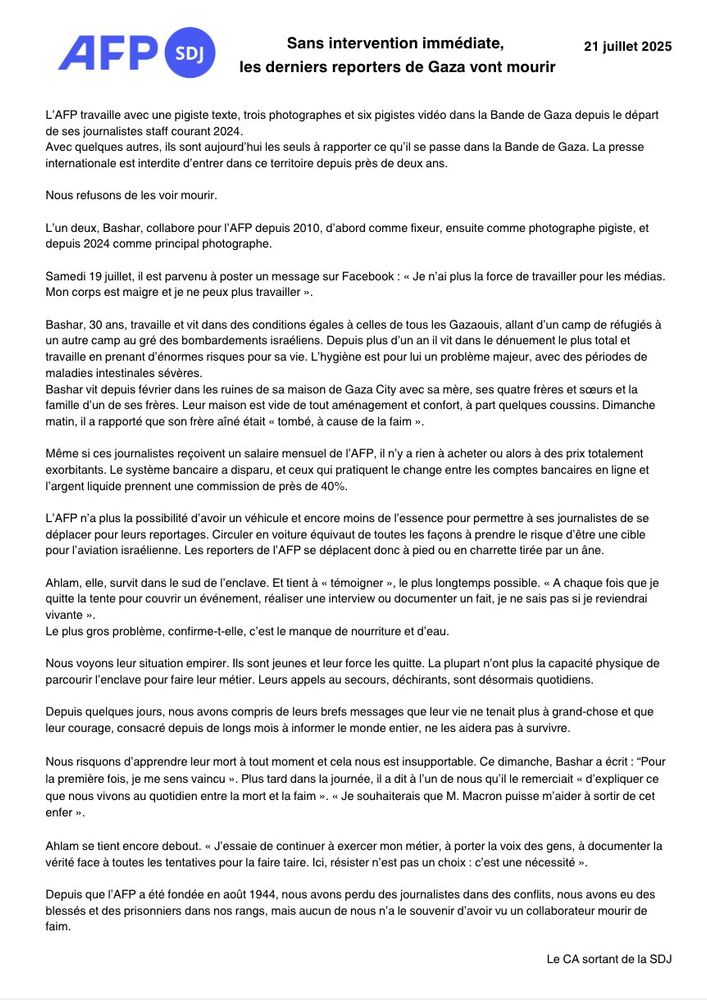
⚫️ La Direction de l’AFP partage l’angoisse exprimée par la SDJ quant à la situation effroyable de ses collaborateurs dans la bande de Gaza ⬇️
21.07.2025 21:13 — 👍 1020 🔁 903 💬 20 📌 85
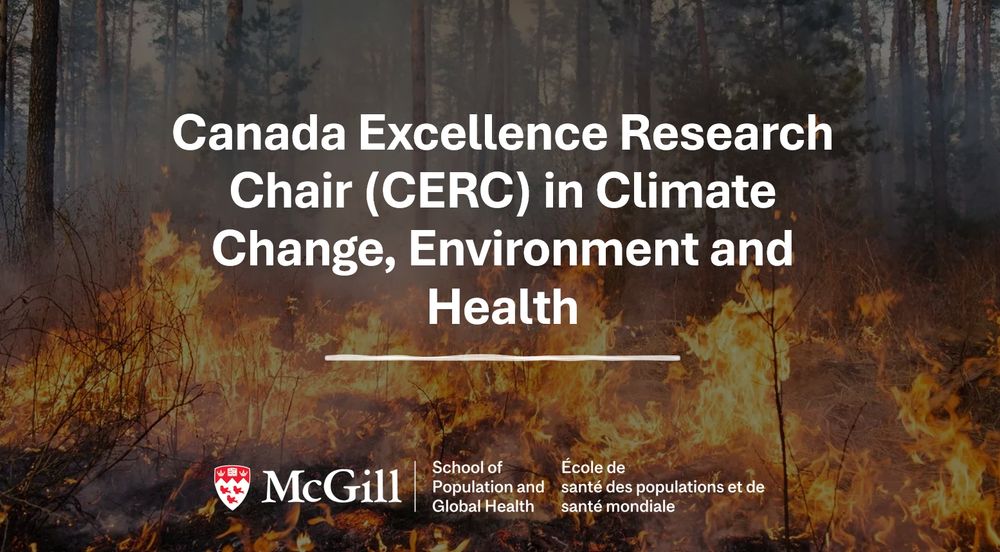
Please share!
Amazing opportunity at @mcgill.ca
We are looking to recruit an internationally recognized, interdisciplinary scientist with a strong track record in innovation and research to direct a new program in climate, environment, and health
mcgill.wd3.myworkdayjobs.com/en-US/McGill...
17.07.2025 10:38 — 👍 84 🔁 72 💬 1 📌 1
Une min pour signer.
"Pour la santé, la sécurité, l’intelligence collective"
Parce que "La Loi Duplomb est une aberration scientifique, éthique, environnementale et sanitaire"
Et qu'il est écrit dans la loi "Chacun a le droit de vivre dans un environnement équilibré et respectueux de la santé"
16.07.2025 21:38 — 👍 2 🔁 3 💬 1 📌 0
Une min pour signer.
"Pour la santé, la sécurité, l’intelligence collective"
Parce que "La Loi Duplomb est une aberration scientifique, éthique, environnementale et sanitaire"
Et qu'il est écrit dans la loi "Chacun a le droit de vivre dans un environnement équilibré et respectueux de la santé"
16.07.2025 21:38 — 👍 2 🔁 3 💬 1 📌 0
Keep in mind that this is a list appropriate for Europe (some invasive plants in NA) but great to see this!
14.07.2025 12:35 — 👍 6 🔁 4 💬 0 📌 0

Person speaks at lectern in front of conference hall audience. Two screens show image of farmland
President’s Award for Research Excellence recipient @elenabennett.bsky.social discusses the transition of systems ecology thinking from “nature for itself” to today’s “people with nature” in her plenary at #CSEE2025 @csee-sceemtgs.bsky.social
07.07.2025 13:03 — 👍 6 🔁 2 💬 0 📌 0

Concours externes CNRS 2025
#RejoignezleCNRS Le @cnrs-alsace.bsky.social recrute 1 Assistant-e en gestion financière et comptable à #Strasbourg #CampusCNRSCronenbourg
@cnrs.fr @apecfr.bsky.social @regiongrandest.bsky.social
Fiche de poste ➡️ bit.ly/4kYJKfC
11.06.2025 15:35 — 👍 0 🔁 1 💬 0 📌 0
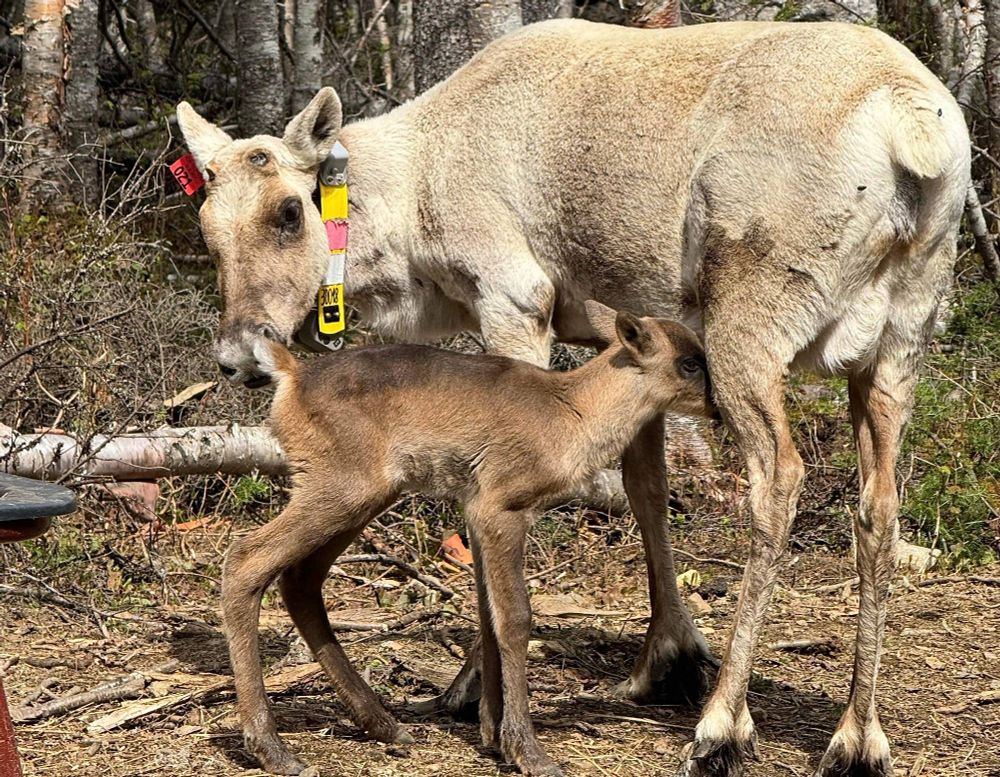
Le gouvernement Legault s’apprête à autoriser des coupes forestières dans l’habitat essentiel des derniers caribous de la Gaspésie. Québec n’a pas non plus de stratégie en ce qui concerne l’avenir de la majorité des bêtes, qui vivent désormais en captivité. www.ledevoir.com/environnemen...
14.05.2025 15:18 — 👍 28 🔁 9 💬 2 📌 3
OPINION
Pesticide Risk Assessment in a Changing World
📄 buff.ly/igDmQVo
@mathildetissier.bsky.social @libererofellows.bsky.social
10.05.2025 16:59 — 👍 4 🔁 2 💬 0 📌 0
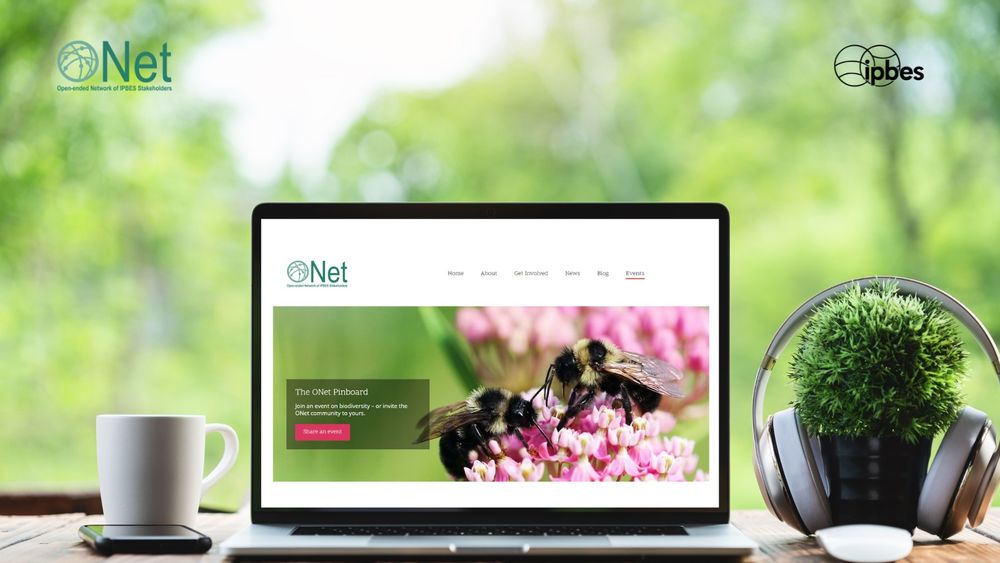
Image of a desk with a mug and some headphones next to a laptop displaying the ONet website.
📣 Join the conversation! 🌍🧪
Upcoming webinar explores how Indigenous Peoples' knowledge contributes to understanding biodiversity-water-food-health connections.
📅May 15, 2025
✍️Register via ONet for "Indigenous Peoples and the #NexusAssessment" here: onet.ipbes.net/index.php/no...
06.05.2025 08:16 — 👍 20 🔁 9 💬 0 📌 3
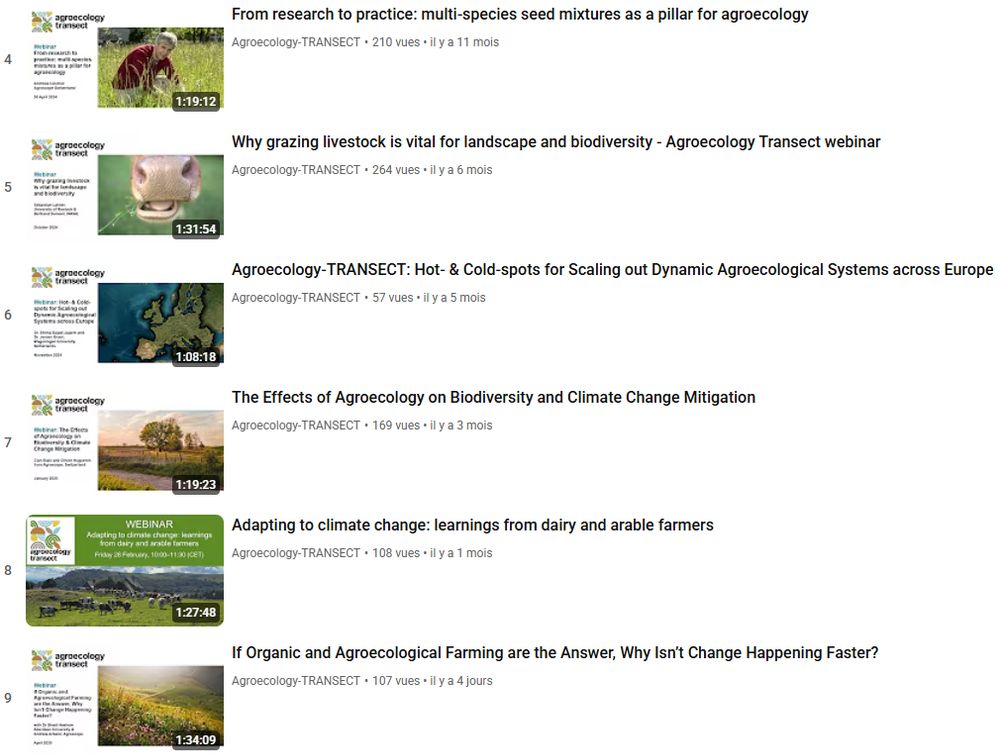
Do you know that the webinars of Agroecology-TRANSECT can be found online 👉 www.youtube.com/@agroecology... with so far:
✅ 9 webinars on transition, adaptation to climate change, biodiversity, policy...
⭐ 1 full session on barriers & levers to agroecology
⏹️ 3 short-formats
#agroecology #teaching
28.04.2025 16:27 — 👍 15 🔁 16 💬 0 📌 0

A king penguin ready to go to sea equipped with an AxyTrek device, including motion sensors, GPS and depth recorder, attached to its back. The penguin has blue identification bands on its flippers. Photo credit: Manfred Enstipp.
King penguins are pretty impressive divers, logging descents of over 300m in the summer, but now researchers @iphc-strasbourg.bsky.social have discovered that the penguins dive even deeper in winter, remaining submerged for up to 10mins & descending up to 424m
journals.biologists.com/jeb/article/...
08.04.2025 16:44 — 👍 13 🔁 6 💬 2 📌 2
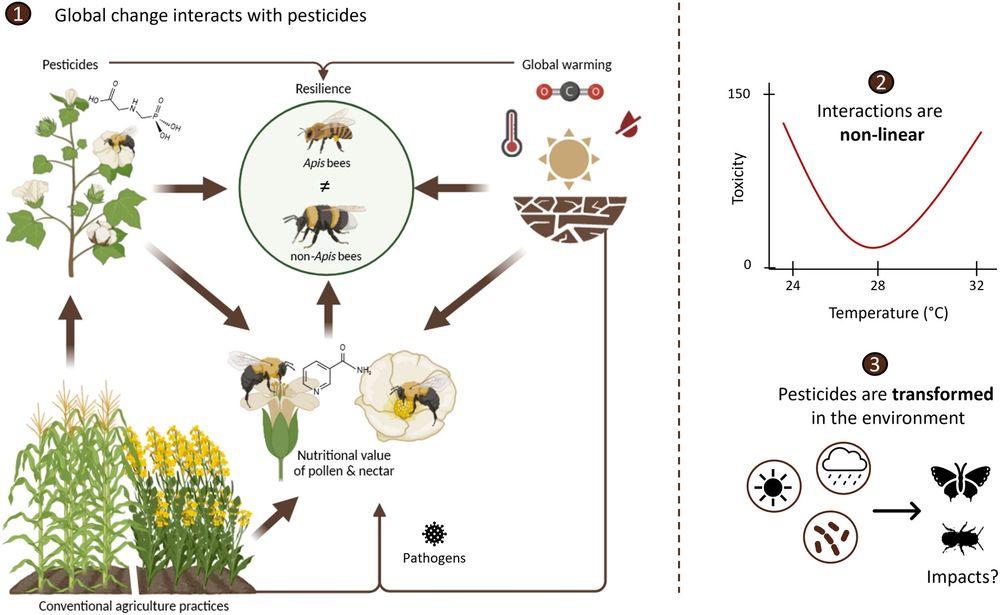
Out now in @globalchangebio.bsky.social: "Pesticide Risk Assessment in a Changing World"
Our climate is changing, and biodiversity is declining. In this context, accurate pesticide risk assessments to insect pollinators and crop auxiliaries -pivots of food security in a changing world- is crucial.
22.04.2025 14:23 — 👍 6 🔁 4 💬 1 📌 0
Thanks! Any feedback/insight is more than welcome!
22.04.2025 15:40 — 👍 0 🔁 0 💬 0 📌 0
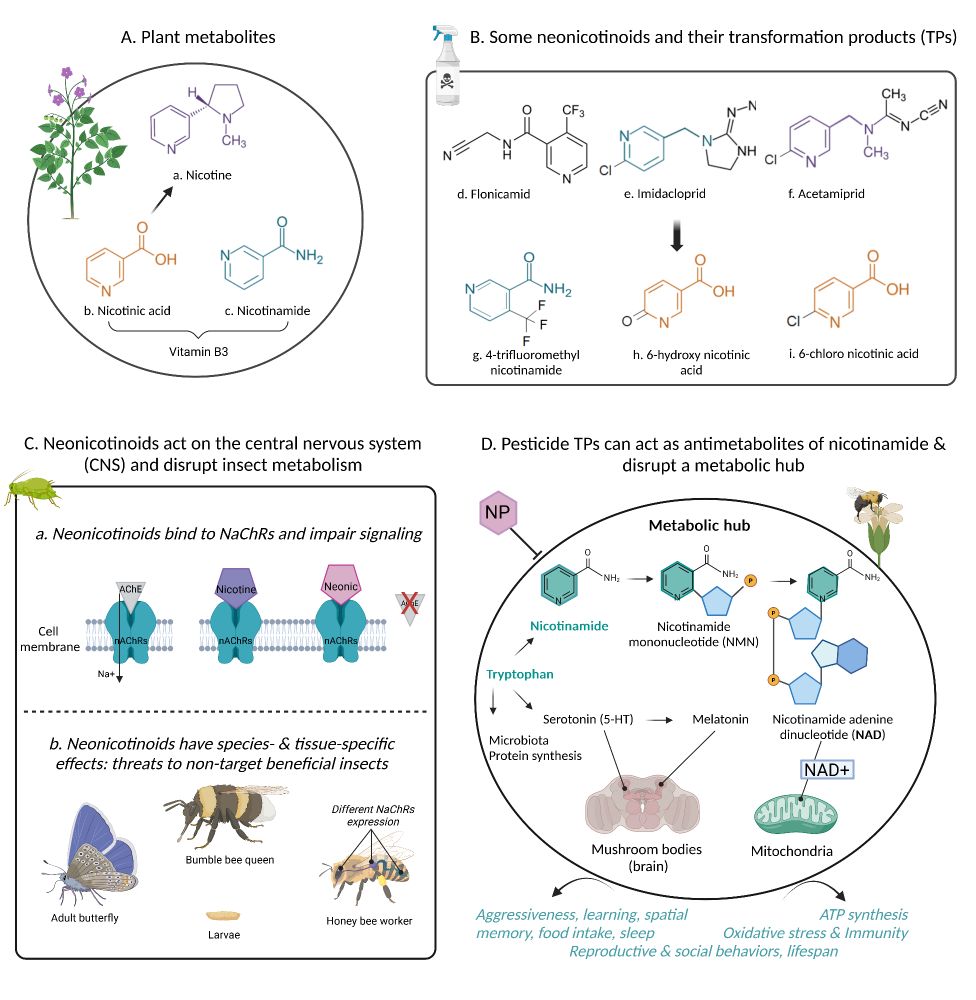
Namely, we highlight how to integrate 1) the non-linear interactions between multiple environmental stressors (e.g. heat stress, malnutrition, pesticide exposure); 2) the ecological consequences of pesticide transformation products, which can have lethal and sublethal effects on many organisms.
22.04.2025 14:23 — 👍 2 🔁 1 💬 1 📌 0
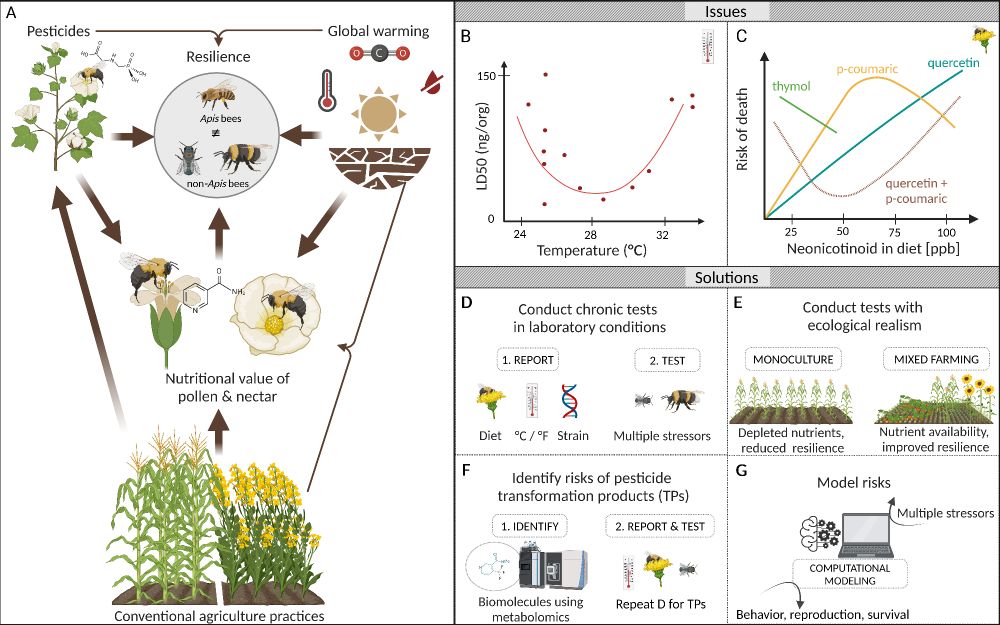
In this opinion piece, we synthetize the ecological and evolutionary complexities of pesticide exposure in the context of global change and propose a holistic approach for environmental risk assessments.
22.04.2025 14:23 — 👍 1 🔁 1 💬 1 📌 0

Out now in @globalchangebio.bsky.social: "Pesticide Risk Assessment in a Changing World"
Our climate is changing, and biodiversity is declining. In this context, accurate pesticide risk assessments to insect pollinators and crop auxiliaries -pivots of food security in a changing world- is crucial.
22.04.2025 14:23 — 👍 6 🔁 4 💬 1 📌 0
former documentary producer and writer. aspiring science communicator, interested in marine plastic pollution and harmful algal blooms.
full-time daughter. professional daydreamer.
Liber Ero Fellow | Université Laval
Collaborative caribou conservation research ❄️
Recherche collaborative sur la conservation du caribou ❄️
https://www.larue-wildresearch.com/
From 🇨🇴 to 🇺🇸 to🇨🇭to 🇨🇦. 🧪
Assistant Prof. Ecology, Macroecology. Tweets english & spanish & french #CienciaCriolla #WomeninSTEM #MujerEnCiencia #LatinasinSTEM. thepazlab.com
PhD researcher @UniKonstanz studying how honeybees regulate their social information in their defensive behaviour 🐝🧠
Interested in everything that’s biology 🌳🌍
she/her
NSF-funded postbacc at the University of Kansas studying the ecophysiology of wild bees 🐝🔬🌻
Community of Practice in Ecosystem Approaches to Health/Communauté de pratique sur les approches écosystémiques de la santé
🌿Land-based learning, One-Planetary- EcoHealth, climate
🐢Contributing to transformation throughout Turtle Island
copeh-canada.org
Marine invertebrates, Hemichordata, eco-evo-devo, fluid mechanics, paleontology, extracellular matrix structures. Telling people 'Once we were worms' since 2000.
http://mapageweb.umontreal.ca/cameroc
https://www.esaquebec.ca/home
A @cdnsciencepub.com journal reporting peer-reviewed research in zoology, including behaviour, physiology, evolution, and more.
Asst Professor of Global development at Cornell University, book: Automation and the Future of Work with Verso, currently: fellow at the New Institute in Hamburg. http://www.aaronbenanav.com
Animatrice du balado Miss America 🇺🇸
🎙Cogeco média + 98.5FM
📺 RDI + Noovo
👩💻 Chaire Raoul-Dandurand
🗣️conférences patricia@pdionne.com
Environmental conservation & sustainability at WWF 🐼. Enjoyer of books, music, movies, and skateboarding, often in Ohio
evolutionary ecologist trying to understand flowers and my teenager | occasional fireweed spotter | 🇨🇦 / 🇸🇪 | enjoying sabbatical | I should be writing
I have recently graduated from a Master in Ecophysiology, Ecology, Ethology from Strasbourg University (France). I am currently seeking a PhD position, preferably on bird and linking physiology and ecology research questions 🦉⚛️📖💭
I love animal behaviour, behavioural ecology, life history strategies, quantitative genetics, social evolution, SQuID-teaching, mixed models, birding, dragonflies, chickens, diving, the sea & the mountains. Prof @lmumuenchen. Views are my own. He/him
MSc student at Université de Sherbrooke
Evolutionary & Molecular Ecology 🐿️
Elle | She/Her
Journaliste spécialisé en environnement au Devoir. Collaborateur régulier à l'émission Moteur de recherche, sur Ici Première. Et parfois photographe amateur de nature et de faune.
Group Leader, Uni Tübingen | Humans, hominins, and apes | Evolution of human cultural evolution
-> When and how did we get from ape-like cultures to deep, broad & open-ended cultural evolution?
https://sites.google.com/view/claudiotennie
Naturalist & illustrator based in California 🌸
Draws bugs & other critters (she/her)
🛒🐛: shop.fossilforager.art
global 🛒🐝: fossilforagershop.etsy.com
Links to my Patreon sticker club, newsletter, & more: fossilforager.carrd.co




















